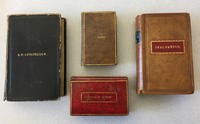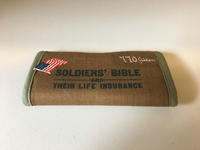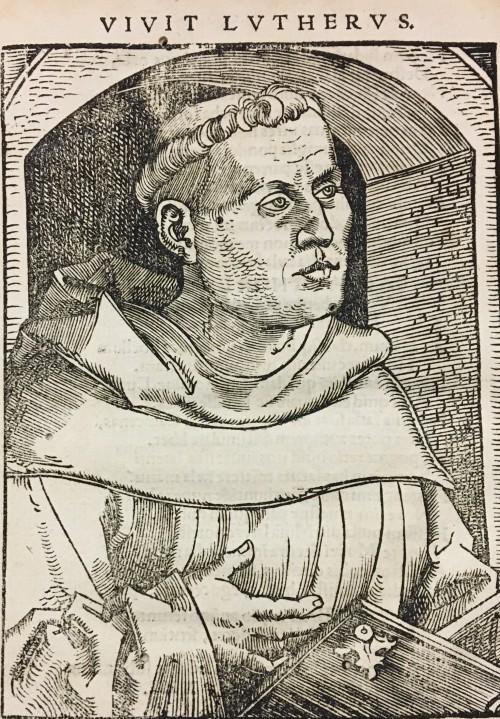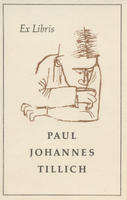Harvard Divinity School Library's Special Collections include about 85,000 volumes of printed books, pamphlets, and broadsides, with imprints dating from the fifteenth to the twenty-first century. The collection includes all of the library’s pre-1851 holdings and all pamphlets printed before 1901. The oldest is a book on virtues by Guillelmus Paraldus printed "not after 1475."
In general, the rare book collection strengths reflect the strengths of the general collections: Early Protestant Christianity, Unitarian Universalism and related “nonconforming” traditions, and biblical studies. Particular subject strengths of the rare book collections include:
- Protestant Reformation
- Unitarianism, Universalism, and American Liberal Religious Traditions
- Salzburger Protestants
- American Board of Commissioners for Foreign Missions (A.B.C.F.M.)
- Arminius and the Remonstrants
- The Paul Tillich Library
- Family, Illustrated, and Imperial Bibles of the 18th-19th Centuries
View selected images from Harvard Divinity School Library's rare books on our blog.
Protestant Reformation
The collections include first editions of Luther, Calvin, Melanchthon, Zwingli, and other reformers. They also include early Hebrew, Latin, and Greek bibles as well as many bibles in vernacular languages. Continental Protestant thought is the focus, though important English Puritan writers and other Dissenters are also included.
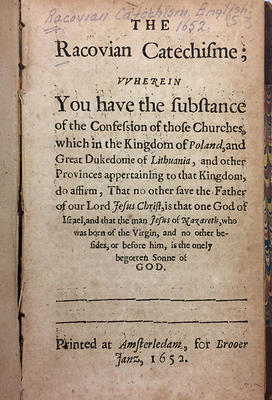 Unitarianism, Universalism, and American Liberal Religious Traditions
Unitarianism, Universalism, and American Liberal Religious Traditions
As the national repository and library of record for the Unitarian Universalist tradition, the rare book collections include books, hymnals, periodicals, curricula, pamphlets, sermons, and other printed materials produced by the Unitarian Universalist Association and its predecessor organizations.
The collections also include early editions of the works of the New England Puritans and first editions of most of the works of important nineteenth-century Unitarians and Universalists, such as William Ellery Channing, Theodore Parker, Hosea Ballou, and Ralph Waldo Emerson. The library holds a small collection of works from Channing’s personal library. A large gift from Harvard Divinity School Dean Douglas Horton and his wife Mildred supplied many books on Puritanism and Congregational polity, including first editions of Puritan divines such as Increase and Cotton Mather.
Salzburger Protestants
Harvard Divinity School Library has been collecting material in the area of religious freedom for many years. Illustrative of this emphasis is the special collection concerning the Lutherans who were expelled from Salzburg, Austria, in 1731 and 1732. Archbishop Leopold von Firmian's Edict of Expulsion ordered those without property to leave within eight days. People with property were given three months to sell and leave. Many of the poor had to march in winter and died on the way. The emigrants fled to East Prussia, the Netherlands, and the colony of Georgia in the New World. In Ebenezer, Georgia, they built the Jerusalem Church, the oldest house of worship still in use in the state. Harvard Divinity School Library holds a collection of all the eighteenth-century histories of the expulsion, plus tracts, broadsides, and published collections of correspondence, and the library continues to collect related secondary resources.
American Board of Commissioners for Foreign Missions (A.B.C.F.M.)
The American Board of Commissioners for Foreign Missions (A.B.C.F.M.) was the largest of the Protestant missionary societies active in the nineteenth century. It had missions in more than twenty countries and established printing offices in South Africa, West Africa, Malta, Smyrna, Beirut, Urmia (Iran), Madras, South China, Hawaii, and Micronesia. Presses were also created to print missionary materials for Native Americans such as the Cherokee, Nez Perce, and Seneca. Harvard Divinity School Library holds a large collection of the pamphlets printed by these mission presses. Most were given to the library in 1968 when the United Church Board for World Ministries (U.C.B.W.M.), the successor to the A.B.C.F.M., closed its library in Boston.
The pamphlets of this collection have been individually cataloged into HOLLIS, but we recommend that researchers also consult the finding aids for the Manuscripts and Archives collections.
Arminius and the Remonstrants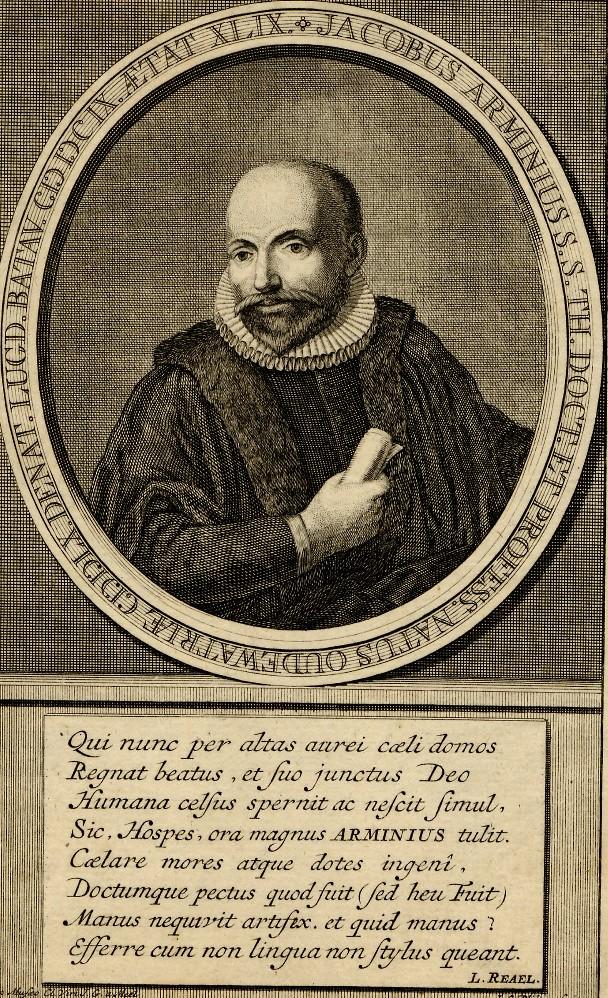
The Library holds an extensive collection of Dutch materials representing the writings of the famous Dutch Reformed theologian, Jacobus Arminius (1560-1609) and his followers known as Remonstrants. Arminius advocated a more liberal view of theology than the strict determinism of the followers of John Calvin. As such, he is often cited as an influence in the development of both Methodism and Unitarianism.
The Remonstrants were named after the title of a petition presented to the Dutch civil government in 1610 requesting that those agreeing with Arminius be granted rights in the church. In one article they declared that Divine sovereignty was compatible with a real free-will in humans. Following condemnation at the Synod of Dort (1618-1619), many were banished and some persecuted.
The portrait of Arminius is from the Library's Dutch portrait collection which came to the Library as part of the library of Jan Pieter de Bie (1871-1959).
The Paul Tillich Library
In addition to the extensive manuscript and archives holdings of Protestant theologian Paul Tillich (1886-1965), the library also maintains a collection of more than 1,000 printed books and articles written by Tillich or from his personal library. You may also browse or search within the Tillich book collection using HOLLIS.
Family, Illustrated, and Imperial Bibles of the Eighteenth and Nineteenth Centuries
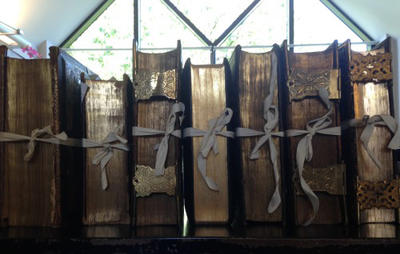 In 2015, The HDS Library received a donation of more than 100 illustrated and family bibles of the eighteenth and nineteenth centuries, the largest such collection in North America. These types of bibles were intended for use by families and laypersons, rather than for scholars or clergy. In these volumes, often the text of the King James Version is surrounded by commentary, illustrations, concordances, maps, and other materials to help the reader experience the Bible. The infinite variation between copies in terms of bindings, illustrations, and other supplemental materials, and sometimes handwritten family trees, etc., make this an important resource for the study of Christianity and culture of these periods.
In 2015, The HDS Library received a donation of more than 100 illustrated and family bibles of the eighteenth and nineteenth centuries, the largest such collection in North America. These types of bibles were intended for use by families and laypersons, rather than for scholars or clergy. In these volumes, often the text of the King James Version is surrounded by commentary, illustrations, concordances, maps, and other materials to help the reader experience the Bible. The infinite variation between copies in terms of bindings, illustrations, and other supplemental materials, and sometimes handwritten family trees, etc., make this an important resource for the study of Christianity and culture of these periods.
Religion and Material Culture/Book History
The collections are rich in evidence of former owners and readers, providing a glimpse into the ways early readers interacted with religious texts. Many items have manuscript annotations, marks of previous ownership, and unique bindings that give insight to the roles these books played people’s lives.
Explore some of the interesting book features found in the rare book collections through the Special Collections blog using the tag #bookhistory.

